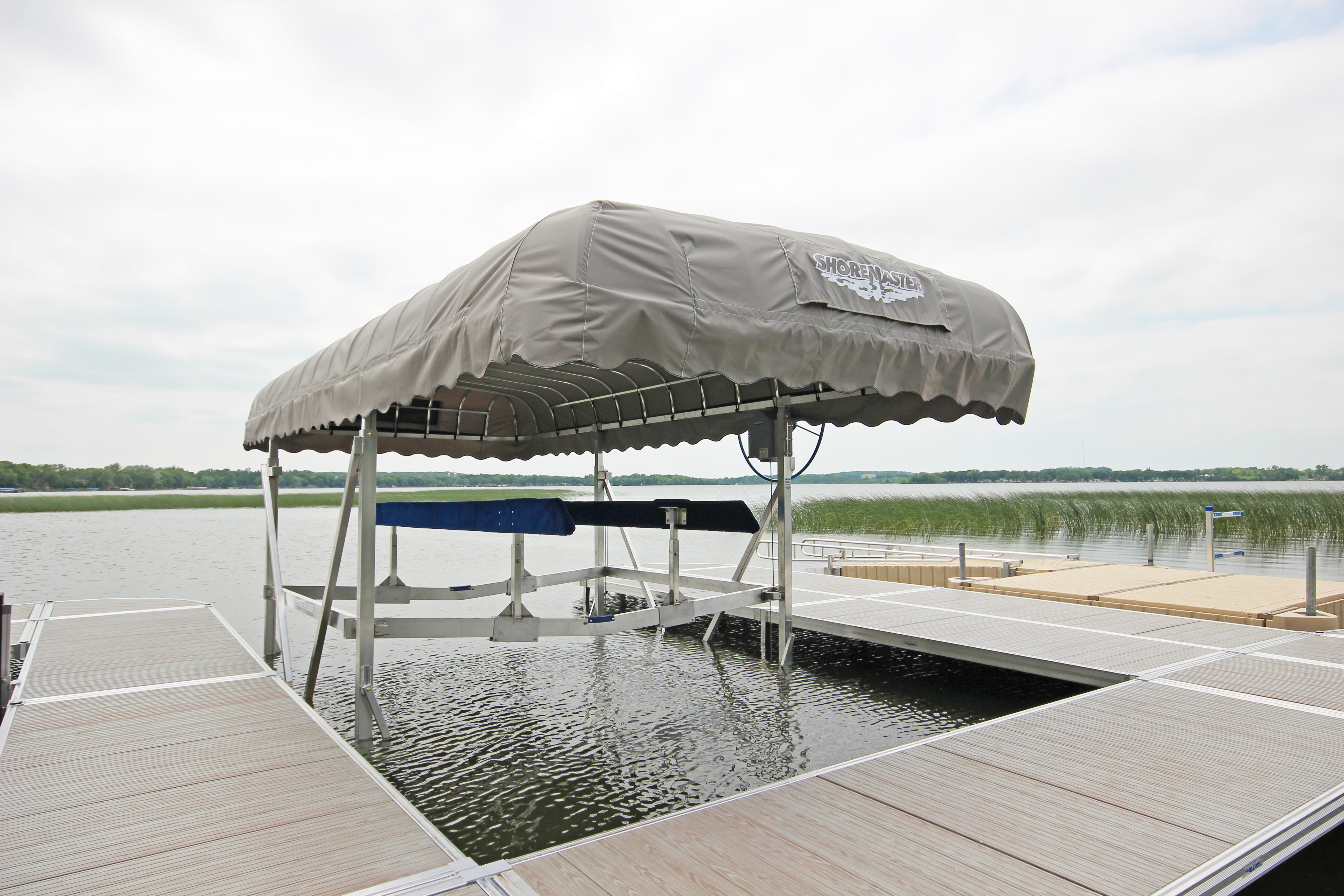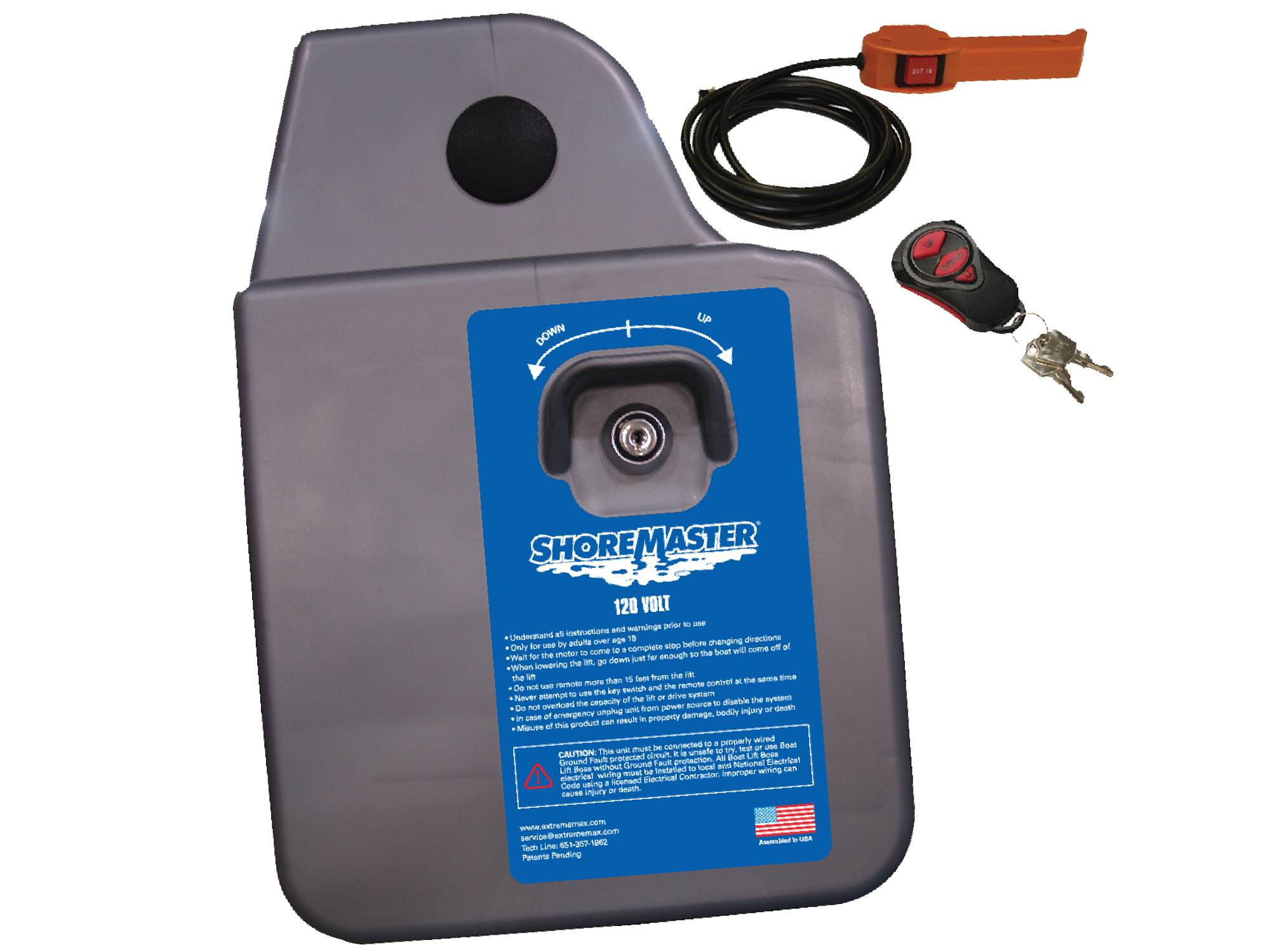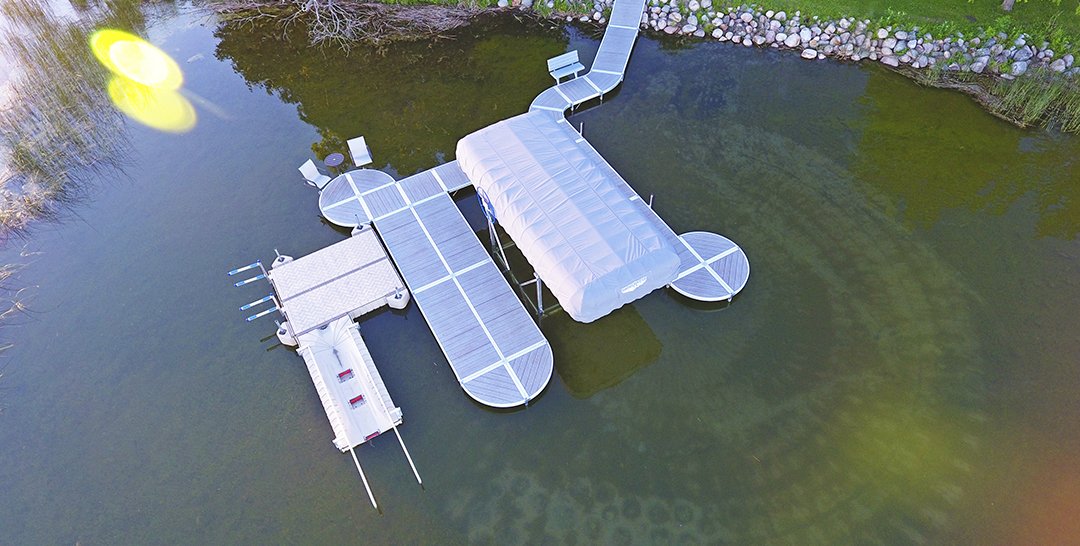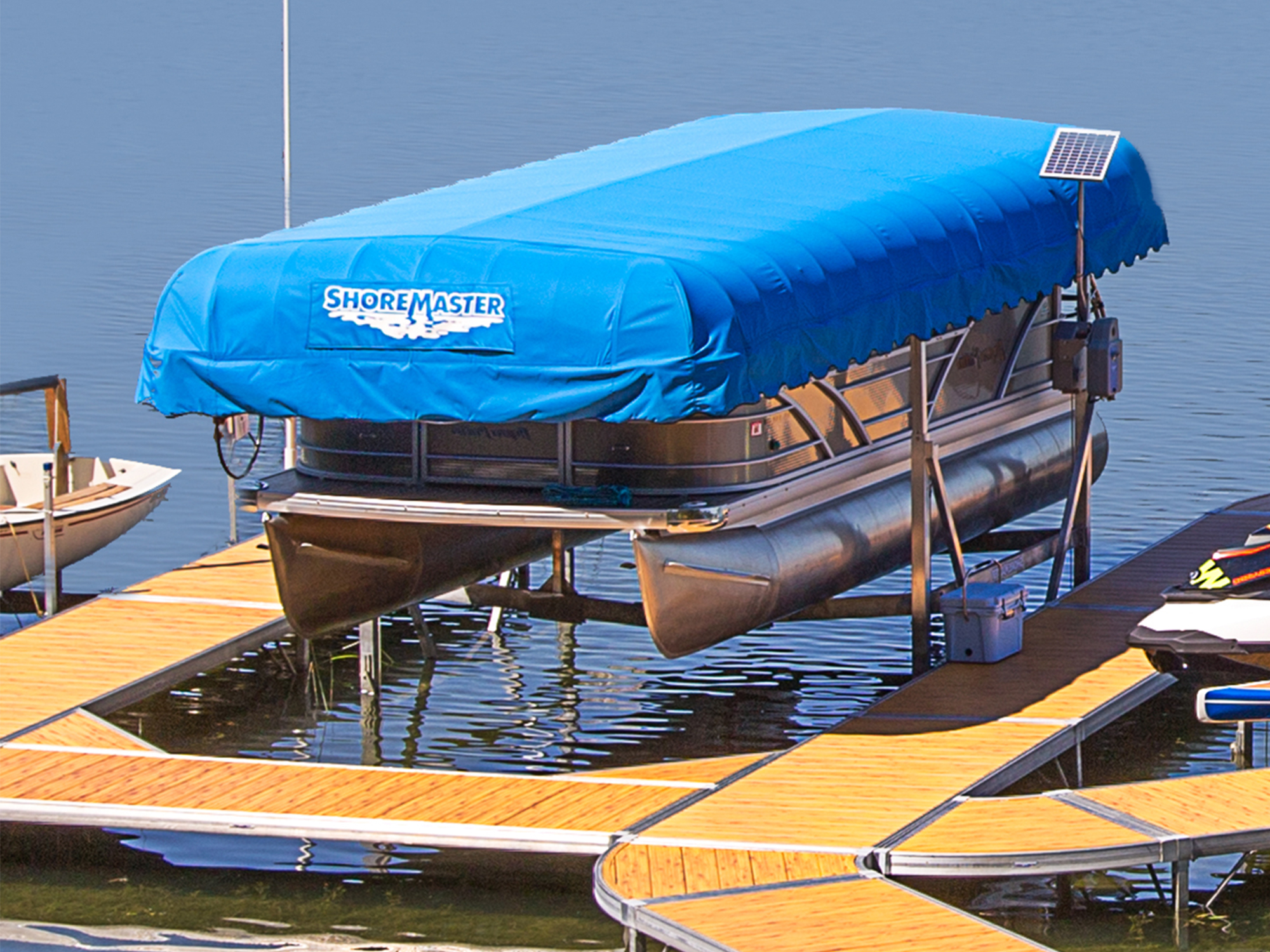February 9, 2023
Boat Lifts and Safety
Written by ShoreMaster Marketing
Boat lifts, especially well-made ones, are built to withstand quite a bit of stress. Boat lifts are designed to keep your watercraft out of the water when it’s not in use—lifting heavy things and standing up to the elements comes with the territory. However, like anything mechanical, boat lifts have their limits, and pushing them too far can lead to disaster.
Follow these safety tips to help protect your lift, dock, boat, and loved ones from danger and save yourself heartache and expenses.

Properly Position Your Boat On and Off the Lift
When parking your boat on your lift, carefully maneuver it toward the lowered, fully-submerged lift. Slowly drive over the lift to guide your boat into position—vertical and full-length guide-ons do wonders for eyeballing the right side-to-side positioning, and the bow and motor stops for front-to-back positioning. The boat should be centered both front to back and side to side to ensure that the weight is distributed evenly and to avoid damage to the boat, lift, and dock.
Don’t Lift Too High
While you want your boat to be as high out of the water as possible, especially during a storm or other inclement weather, pushing your boat lift too far isn’t the way to do it. The lifting platform or rack shouldn’t hit the frame as you lift, but it’s a common mistake. An extra half an inch isn’t worth causing injuries or damaging your watercraft, lift, or boat dock.
Stick Within the Weight Capacity
Boat lift weight capacity also should be taken into consideration. Follow these guidelines to the pound—your boat lift can’t and shouldn’t be expected to carry something outside of its guidelines, both for its longevity and your safety. Your cables and pulleys, even if they’re in perfect shape, can only handle what the manufacturer says they can. Remember that the weight rating doesn’t just apply to your boat’s dry weight in the spec sheet, either: your boat lift needs to be able to handle all of the fuel, water, and equipment you’re bringing on board. When you store your boat, pull the drain plug, especially if you’re going to be away for a bit—you don’t want your lift to carry the additional weight if an accidental rainstorm rolls through, and you don’t want your bilge pump solely responsible for draining your boat.
Make Repairs and Replacements as Needed
Even on the most well-built boat lift, cables can fail without warning. There’s no telltale signs of creaking or groaning when they’re about to fail—you only hear a snapping sound before your boat falls. Depending on how frequently your lift is used, the water you’re in, and other factors, cables can wear out and need to be replaced periodically. Even if they don’t show visible signs of damage, cables should be replaced every two years on average. If the cables show discoloration, rust, or other signs of corrosion, they definitely need to be replaced. You might save $40 by reusing your cable, but you’ll pay much more than that if your lift fails and your boat sinks. Lubricate the moving parts that need it, rinse your lift with fresh water after each use, and make sure that the hardware is secure. Inspect and regularly perform boat lift maintenance before and after installing it to see which small repairs you can make before they become much larger and more expensive problems.
Stay Safe Out There!
Your boat lift isn’t the only place you can be mindful of boating safety. Make sure you and your loved ones use properly fitted life jackets on the water to avoid tragic accidents. Everyone, even experienced boaters, would benefit from brushing up their skills in a boating safety course. Get a free safety check for your vessel to ensure it complies with all relevant safety laws—the USCG website can help you get signed up. Ensure that you have a waterfront safety plan that everyone is aware of and will follow. Even if you’re careful, accidents can happen, but they don’t have to end in tragedy.
Do you have questions about what waterfront system would work best for your shoreline? Choose a dealer that knows the water in your area as well as they know the products they carry. Get in touch with a local ShoreMaster dealer by finding one through our contact form.



